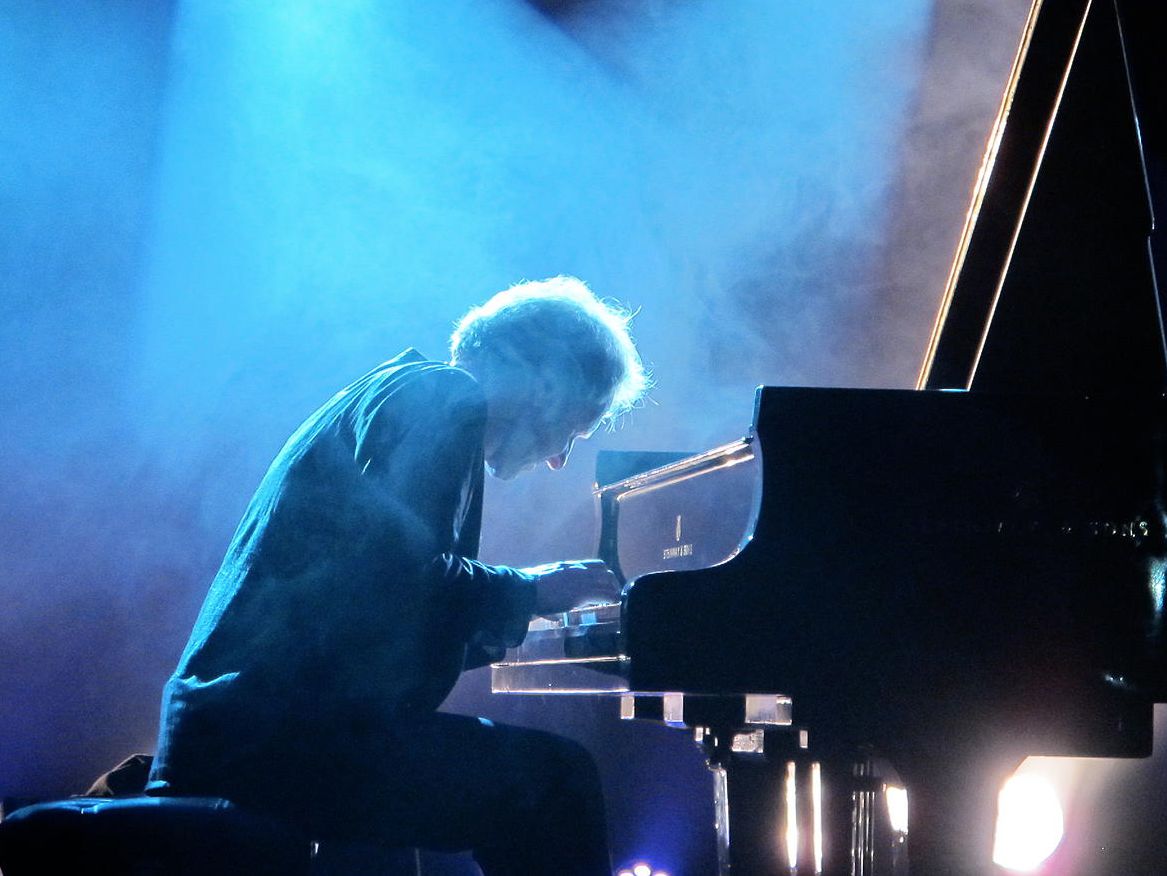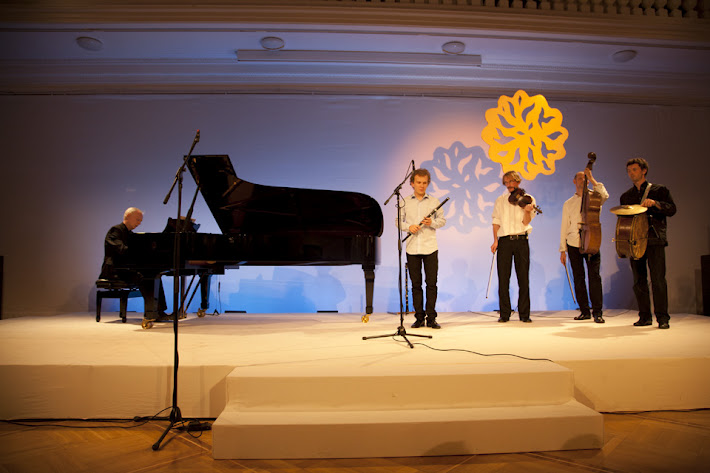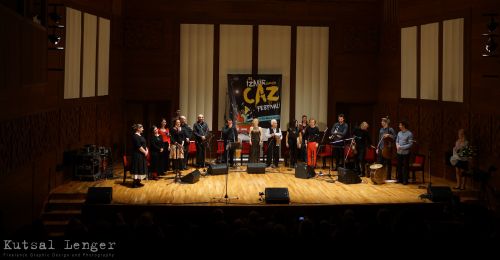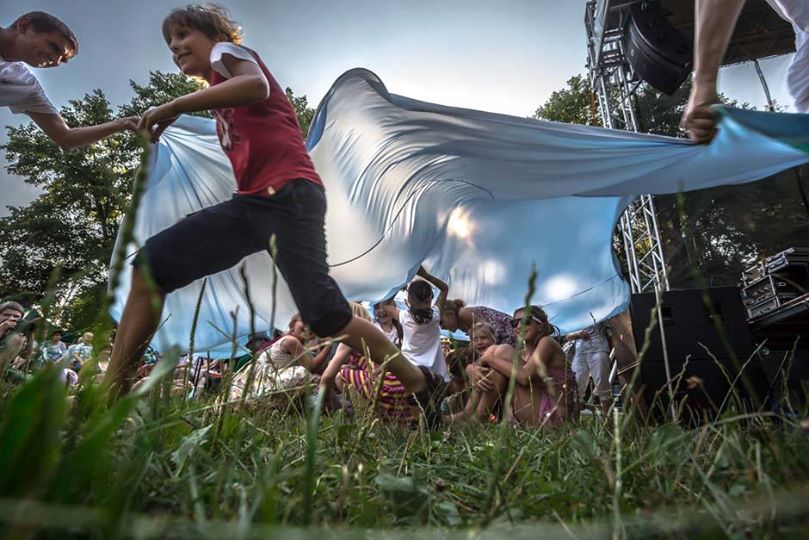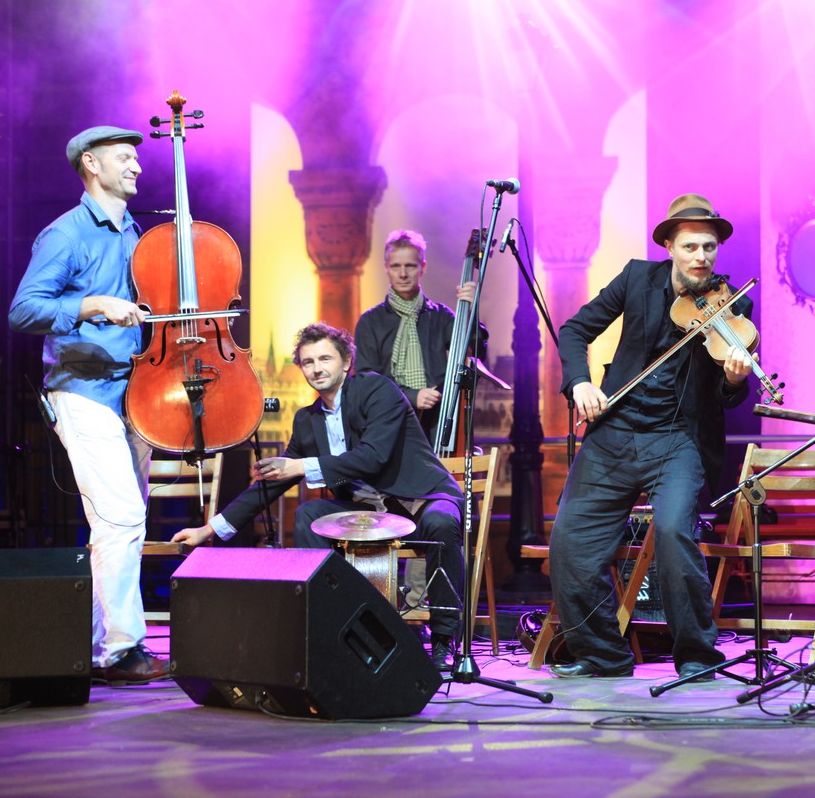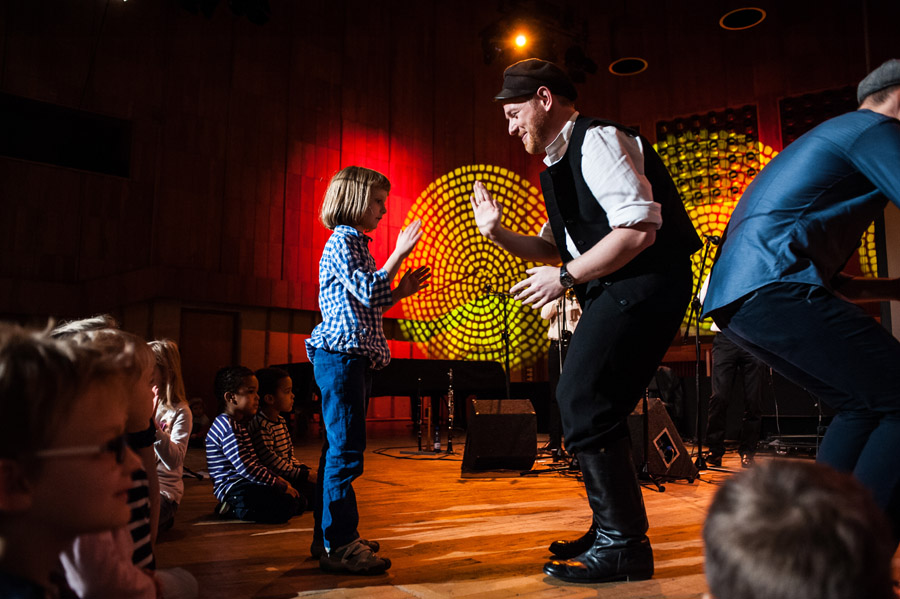Project Description
Song journey
What could Polish and Turkish music have in common? These two cultures seem worlds apart. And yet, this year we celebrate 600 years of diplomatic relations between our countries. It is now hard to imagine, but the multi-ethnic Polish Commonwealth and the Ottoman Empire were political, economic and cultural neighbours for centuries.
Now, after a break of nearly 200 years, we’re now looking for the vestiges of our former bonds. Our musical trip to Turkey has three points of reference: the historical proximity of both cultures, the shared “natural sources” of music and dance forms (sounds of nature, birdsong, the impact of body movement on the state of mind), and the personal experiences and individual sensitivity of the musicians participating in the project.
Ever since our adventure with Polish traditional music began, our trips to Polish villages have continued to reveal phenomena which transgress the European understanding of rhythm, melody and improvisation. It is only natural to ask where this might come from. Is it a trace of some former glory of a great Eurasian musical culture, or is it just a flash of local genius? With these questions in mind, we flew to İzmir. There we met an excellent singer Muazez Özaçar and a group of superb instrumentalists: Fedai Tekşahin, Hüseyin Koçak, Yılmaz Atalar oraz Selin Gökdemir. We also invited along some outstanding Polish singers of traditional music: Adam Strug, Ewa Grochowska, Justyna Piernik, Maniuszka Bikont and Kaja Prusinowska. In our preparations for a joint Polish-Turkish concert, we planned to draw on their knowledge of vocal traditions from various regions of Poland: Kurpie, Lubelszczyzna, Kujawy, Wielkopolska and Radomskie.
Singing in microtonal scales and melismatic singing
To an ear that is used to equally tempered music, it may be shocking to discover that there are additional, precisely sung sounds, for example, between E and F. Or that intervals may not only be minor or major, but also a little larger or smaller. In Turkey, this is normal. For instance, the most popular Turkish instrument, the saz, simply has more precisely laid frets, which makes it possible to follow the vocal line. Each of our vocalists prepared songs learnt from distinguished village singers (elderly women who had preserved the skill of singing in a melismatic, untempered style): Waleria Żarnochowska from Kurpie, … Wojnowska from Kujawy, Franciszka Ciesiółkowa from Wielkopolska, Anna Malec from Lubelskie, Maria Pęzik from Radomskie. The singing style of each of these women is full of precise embellishments and microtones, and relies on a special, individual timbre and vocal emission. One feels as though the voice has the properties of an artist’s brush, painting different patterns and designs in a variety of colours from words and sounds – a broader stroke here, a narrower stroke there, with occasional splashes of little droplets of joy or sorrow. I have the same impression when I listen to melismatic singing from the Middle East.
At rehearsals in İzmir we got down to work. We began juxtaposing various songs, and asked Muazez Özaçar about parallel tunes and techniques, encouraging her to contribute her own ideas. Some of our intuitions turned out to be true, others not – I am unable to offer a detailed analysis here. It is enough to simply listen to the concert and decide for yourself how similar – or indeed how different – the Polish and Turkish singing traditions are.
Soon after that, in İstanbul, I attended an exhibition of great works by Turkish calligraphy masters – medieval inscriptions of fragments of the Koran. They were quite large and created an impression of unity – the unity of words, images and sounds, in which the brushstroke follows the same impulse as the voice of the singer who “reads” the Koran. We are confronted with the sensitivity of people who visualise music (and words) through body movements, rather than adding dots to a stave. We experience a primeval unity of emotion, intention and expression – something that goes back to the universal roots of human culture.
The mazurek and the whirling dervishes
I once stumbled upon a performance of whirling dervishes from Konya. I was amazed to find that, after a musical sequence in slow tempo, which brought the dancers into a contemplative state, the band started playing in 6/8 time. The new tune was deceptively similar to that of a mazurek (or oberek), and the dervishes started whirling, moving their feet in a manner which was identical to the style of dancing practiced by our village dancers. Since then, I have often wondered if this striking similarity is just a result of similar independent mystical experiences or whether there actually was some common historical source. When we met with the musicians from İzmir, we learned that in Turkey this type of music is reserved for religious contexts only (which means that the “uninitiated” don’t play it, and therefore don’t know it), and that our wild mazureks, in spite of the familiar musical phrases, are considered rather exotic. We realized that the discovery of whirling, and the tempo at which it should be done, is probably ingrained in human nature (this is clearly visible in children, who instinctively enjoy spinning around), and that the purpose of whirling – both in the land of the dervishes and in the Radomskie region – is simply to “lose yourself in an expanse”. We eagerly await the opportunity to meet these “initiated” musicians – perhaps some day it will happen.
Polonaise and mugam
This was our greatest musical discovery. No sooner had we played one of the dignified polonaises (walking dances) from Oskar Kolberg’s ethnographic collections, than the Turkish musicians cried out: “Mugam! Mugam!”. They then began playing a very similar tune, without changing the rhythm – it was still possible to lead a majestic procession of dancers. We pondered a while longer over this discovery, puzzled by the apparent fact that the polonaise – a ”flagship” Polish style first described by Telemann and spread all over Europe as early as in the 16th century – turns out to be a component of Eastern culture, too. Having familiarised ourselves a little with the characteristics of selected mugam (a basic form of classical music not only in Turkey, but also in the Middle East), which rely on a theme, a scale (or, rather, various scales) and improvisation, we started thinking that, in Europe, Poland was something of a musical bulwark of the East. This view is confirmed by a remark by one of German baroque composers, who said that the Polish style of music can be recognised by the melody, which had a very “exotic” Eastern quality, and not by the rhythm, which was already quite universal in Europe at the time. Could it be that the “Polish dance” (which is what polonaise really means) was actually a Turkish dance?
The omnipresent musicality
Muazez Özaçar invited us to take part in a rehearsal of an amateur choir that she directs. We accepted the invitation, though we were expecting a somewhat typical scenario, i.e. people singing in parts, reading sheet music. We were a little worried we might become bored. To our great surprise, we arrived at a POLICE STATION and, right away, we could hear the sound of music coming from the third floor. The songs were accompanied by instruments: the ney (a rim-blown flute) and the darbuka (a goblet-shaped drum made of clay or metal). The policemen and policewomen were gradually assembling to play music, to sing and to improvise. The rehearsal itself (which was in preparation for a concert) began when Muazez sat behind a table, like a school teacher, and asked the men and women in turn to sing their songs. The singers were accompanied by a small instrumental band (the saz, the ney, the darbuka), and the whole group of singers joined in for choruses. They all sang and played from memory. It was marvellous music – in fact, as far as the skills and the intensity of the performance go, each singer surpassed the talent of all our pop stars put together. “It was my own song, I created it myself,” one of the singers told me as he returned to his seat, beaming with joy.
We asked the volunteer girls who showed us around İzmir whether they knew and practiced Turkish dances. “Yes, of course,” they replied. When we enquired about where they learnt them, they looked surprised: “What do you mean, where? At home, from our mums. But we only know the dances from our region. If someone’s talented and wants to learn dances from other regions, they study at the Conservatoire”.
We got into a taxi. The driver turned on the radio. The music that was playing, although popular, followed the melody lines and the rhythmic patterns of ancient Turkish songs. The driver felt at home, whereas we really felt that we were in Turkey. We instantly started to think of our own country – do foreigners in Poland ever have the opportunity to feel something unique, to really have the experience of not being anywhere else, but in Poland?
The Museum of Instruments – the ancient music of Anatolia
Among its many activities, İKSEV (the İzmir Foundation for Culture, Arts and Education – the Turkish organizer of our trip) runs the Müziksev Museum of Traditional Instruments in İzmir. Our visit there was particularly memorable, mainly because of our brilliant guide (Mr Guner Ozcan), as well as the amazing conclusions drawn from looking at – and listening to – the musical instruments exhibited there. Apparently, the musical instruments of ancient Greece (we were, after all, at the site of the ancient city of Smyrna) and Babylonia do not differ significantly from contemporary ones – they use the same scale with microtones and the music is played in the same way. The zurna (and the shawm) is equivalent to the ancient aulos, the saz is the long-necked lute, and the santur is the dulcimer (when I started playing the dulcimer, the Turks smiled knowingly and said: “santur”). And then there are the harps, zithers, drums, flutes and kemans (I soon learned that I play the “keman”, which is the Turkish name for the fiddle). These ancient instruments are still in common use.
Next to that collection, there were also some instruments from Central Asia (after all, it was from there that the Turks travelled to Anatolia), most of them based on the anhemitonic pentatonic scale.
What makes these musical traditions so different? And how is it that something as ephemeral as sound is able to continue uninterrupted for so long? Our guide – the founder of the museum – smiled gently and explained that when various ethnic groups came to the valleys of Anatolia and conquered them, they settled into the robust culture that already existed there. It was the same with the Turks. They married some local beauties, learned to play instruments they had never heard of before, and now they continue the musical traditions of the ancient Greeks. In a way, they themselves became ancient Greeks.
The Centre of Marian Songs on “Mount Zion”
A concert tour usually means a tight schedule of work (rehearsals, sound checks, concerts, meetings), so we always try well in advance to set one additional day aside to experience the flavour of local area. We often set aside a day for sightseeing at our own expense.
After the concert in İzmir, we were approached by people in lay clothes, who cordially thanked us – in Polish! – for our music. We soon learned that they were monks from a tiny monastery called “The House of the Virgin Mary”, which is situated right next to the ruins of the ancient city of Ephesus. They run the monastery themselves. In Turkey, it is forbidden to wear a habit outside the monastery walls. We were invited to visit them there.
It was a beautiful, sunny day. We left İzmir early in the morning, with the Turkish spring all around us. We made our way to the hilltop, where Brother Maciej was already waiting for us. He gave us a tour of the site, which is considered holy by Christians and Muslims alike. It is not only (probably) the last “House of the Mother of Jesus”, but also the place where her earthly existence came to an end. We pondered the issue of the Assumption, discussed the visions of Anne Catherine Emmerich, and considered our questions and doubts. This simple, modest place is permeated with a sense of holiness and prayer. One can also sense something very special there: peace between Christians and Muslims, for whom Mother Mary (Meryem Ana) is also an object of worship and prayer. We sat and talked at a table in the courtyard. After a while I suddenly remembered the beginning of a song that I learnt a long time ago, a Ukrainian epic religious song. I began singing “Mary left the monastery”, and was astounded to hear more and more stanzas coming from the dark recesses of my own memory. In the song, Mary climbs a high hill (Mount Zion), where some carpenters are building a church. Inside the church there are three tombs. The first one belongs to Jesus Christ, and candles are burning in front of it. The second one belongs to John the Evangelist, and people are reading books in front of it. The third one belongs to the Virgin Mary, and a rose blooms on it. A bird leaves the rose flower and flies up to the sky, singing: “Open up, Heaven! And you, Saints, bow before her!”
Ewa, Kaja and Maniuszka then started singing similar songs, in Polish. We realized we were now standing on that very same “Mount Zion”, which for centuries has been the topic of songs sung all over the Slavic countries (and perhaps even all over the Christian world). The mystery of the bird leaving a rose flower and flying up to the sky became almost tangible. “Let’s start a Traditional Marian Song Centre here!” we suggested to Brother Maciej, once the first surge of emotions had subsided.
Those are my thoughts and my memories of the six days we spent in İzmir. I hope the large quantity and the quality of our musical and cultural discoveries will stay with us forever. Some of them ought to become a starting point for further quests, meetings and other activities, such as concerts, recordings and research projects – which, I hope, will begin when the time is right. I am glad I was there.
Janusz Prusinowski
JANUSZ PRUSINOWSKI TRIO featuring ADAM STRUG and MONODIA POLSKA
& EWA GROCHOWSKA VOCAL ENSEMBLES featuring Turkish guests:
Muazzez Özaçar – vocal
Fedai Tekşahin - kaval & cura
Hüseyin Koçak - baglama
Yılmaz Atalar - percussion
Selin Gökdemir - percussion
Yunus Emre Kilic - dance
Aygül Doruklu - dance
Janusz Prusinowski - fiddle, dulcimer, Polish accordion, vocal
Piotr Piszczatowski – baraban drum, frame drum, vocal
Michal Żak - wooden flutes, shawm, clarinet, vocal
Piotr Zgorzelski - folk bass, dancing, vocal
Szczepan Pospieszalski - trumpet, vocal
Adam Strug - vocal
Ewa Grochowska - vocal
Karolina Prusinowska - vocal
Maniucha Bikont - vocal
Justyna Piernik - vocal
This project was a part of the cultural program celebrating the 600th anniversary of the Polish-Turkish diplomatic affairs in 2014.
Pozostałe projekty:
